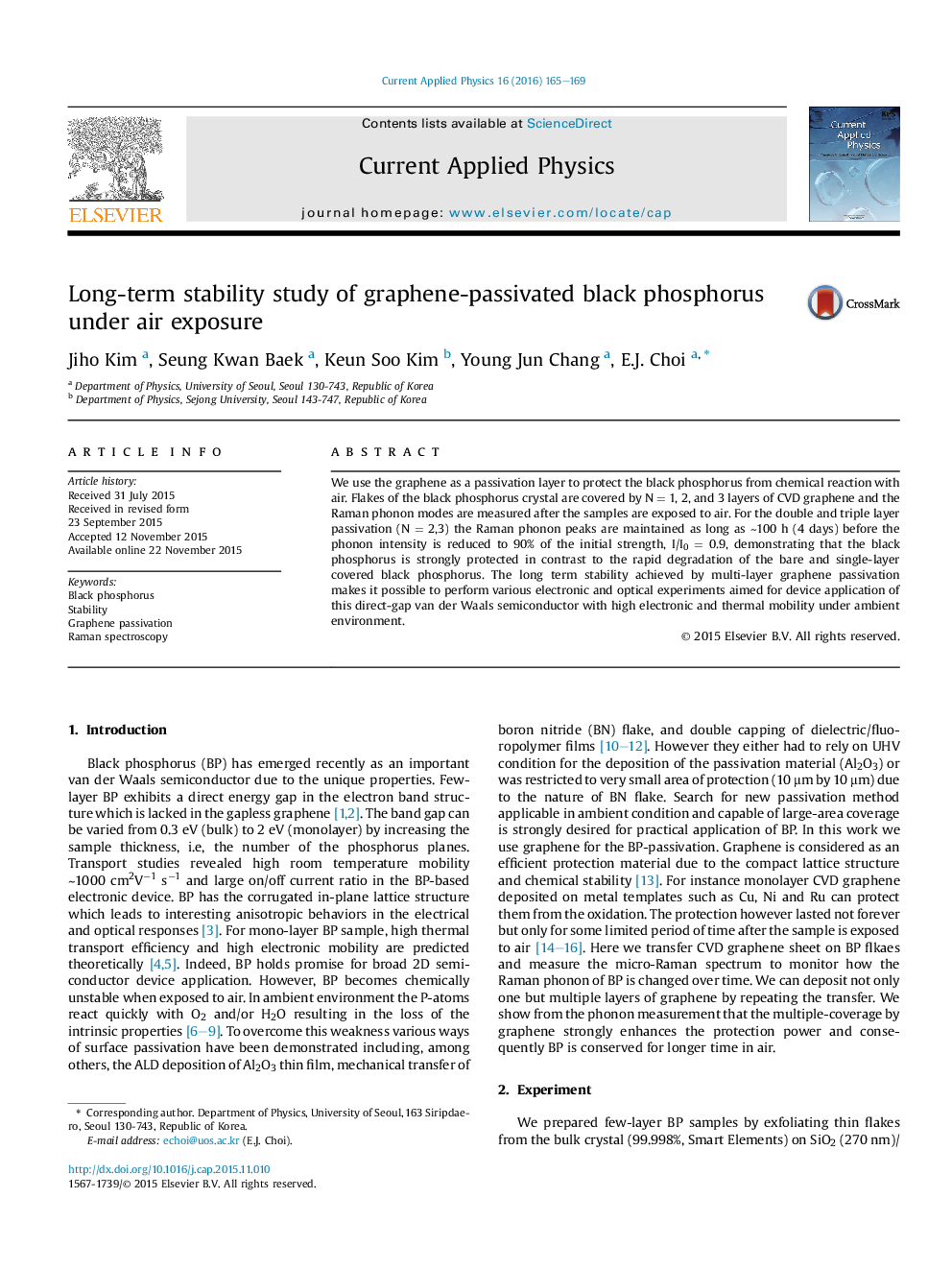| Article ID | Journal | Published Year | Pages | File Type |
|---|---|---|---|---|
| 1785951 | Current Applied Physics | 2016 | 5 Pages |
•Exfoliated black phosphorus flakes were covered with passivation graphene layer (1∼3L).•Raman spectroscopy and optical microscope were studied over 20 days.•2–3 Layer graphene shows superior protection effect for underlying black phosphorus flakes.
We use the graphene as a passivation layer to protect the black phosphorus from chemical reaction with air. Flakes of the black phosphorus crystal are covered by N = 1, 2, and 3 layers of CVD graphene and the Raman phonon modes are measured after the samples are exposed to air. For the double and triple layer passivation (N = 2,3) the Raman phonon peaks are maintained as long as ∼100 h (4 days) before the phonon intensity is reduced to 90% of the initial strength, I/I0 = 0.9, demonstrating that the black phosphorus is strongly protected in contrast to the rapid degradation of the bare and single-layer covered black phosphorus. The long term stability achieved by multi-layer graphene passivation makes it possible to perform various electronic and optical experiments aimed for device application of this direct-gap van der Waals semiconductor with high electronic and thermal mobility under ambient environment.
